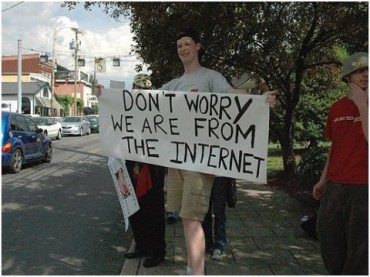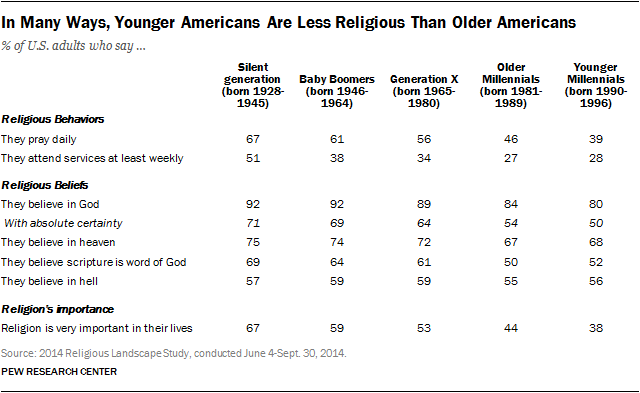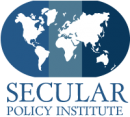 It is now widely understood that global religiosity is declining. But which demographic is driving this demonstrable decay, and which factors are contributing to it? A recent Pew Research study demonstrated the momentous impact the millennial generation (those born from 1981 onwards) is having on religiosity levels.┬áLetÔÇÖs look at some of the key factors at play, while providing international context and identifying the methods by which we can continue to drive the secular movement.
It is now widely understood that global religiosity is declining. But which demographic is driving this demonstrable decay, and which factors are contributing to it? A recent Pew Research study demonstrated the momentous impact the millennial generation (those born from 1981 onwards) is having on religiosity levels.┬áLetÔÇÖs look at some of the key factors at play, while providing international context and identifying the methods by which we can continue to drive the secular movement.
 PewÔÇÖs results showed us that, while 82% of US citizens born between 1981-1996 believe in God, just 52% do so with ÔÇ£absolute certaintyÔÇØ. 92% of the comparatively older generation ÔÇô defined in the study as those born between 1928-1964 ÔÇô believe in God, with a certainty rate of 70%. These results do not merely suggest declining religiosity; they represent a wider trend. Indeed, a separate Pew study conducted in May of 2015 mapped the correlation between age and faith and produced similar results.
PewÔÇÖs results showed us that, while 82% of US citizens born between 1981-1996 believe in God, just 52% do so with ÔÇ£absolute certaintyÔÇØ. 92% of the comparatively older generation ÔÇô defined in the study as those born between 1928-1964 ÔÇô believe in God, with a certainty rate of 70%. These results do not merely suggest declining religiosity; they represent a wider trend. Indeed, a separate Pew study conducted in May of 2015 mapped the correlation between age and faith and produced similar results.
Furthermore, these results form part of an international consensus. Take Britain, for example, where according to a YouGov poll just 25% of 18-24 year olds profess a belief in God compared to a national average of 59%. Further afield, an Australian Bureau of Statistics study establishes the trend once more, with the young being most likely to have no religion. We see, then, the internationalization of non-belief among young people.
There are many factors propelling this pattern, so letÔÇÖs just look at two. Firstly, the growth in Internet accessibility has meant the millennial generation has grown up online. This not only enables instant access to popular scientific journals as well as critiques of theological arguments, but also fosters a healthy, critical approach towards political and economic establishments. As we become comfortable with undermining earthly authority (including, for example, the scandals of the Catholic Church), so too do we shed the taboo that shelters celestial authority from criticism. Secondly, as we begin to scientifically define the neurological underpinnings of transcendence, we begin to free spirituality from the shackles of religion. This welcome severance will most likely reduce the percentage of those who affiliate themselves with religious orthodoxy simply because of its spiritual dimensions, and often do so unaware of the potential spiritual scope of an atheistic, secular person.
However, some important barriers to secularism remain for the younger populations. One particularly unfortunate example is the social and familial stigma attached to being an atheist in the USA. Indeed, this stigma diffused rapidly during the McCarthy era ÔÇô a time when atheism was associated with communism and thus irreligion with treason. That in 2016 a nonbeliever must ÔÇÿcome outÔÇÖ while fearing social persecution is a truly lamentable reality, and a reality which stands in stark contrast to the basic precepts of secularism.
While PewÔÇÖs results give us much encouragement, we must be sure to strengthen from a position of strength. But how are we to fully know the secular millennial demographic? Until we eliminate the stigma associated with atheism ÔÇô and an objective, critical approach is paramount here ÔÇô we cannot begin to guess. The total amount of closet atheists and secularists, living in too much fear to profess their worldview, is incalculable. What we do know, however, is that the millennials are leading the way, giving the secular movement a generation of optimism.
